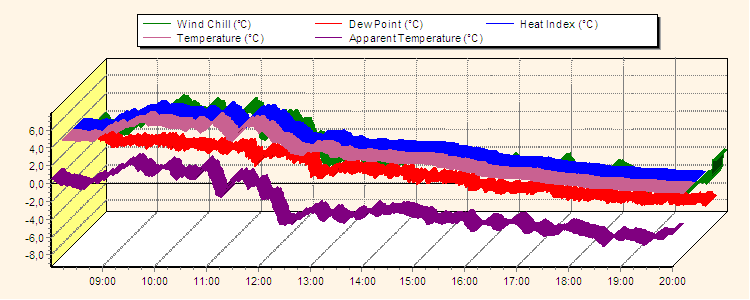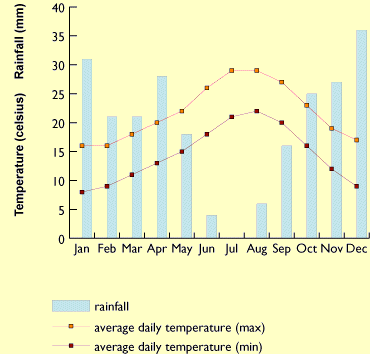
San Francisco’s summers are dry and its winters are wet. San Francisco’s winters are not much cooler than its summers, while Beijing is hot in summer and cold in winter. However, the daily and seasonal changes make San Francisco and Beijing very different. For example, San Francisco, California, and Beijing, China, have similar yearly temperatures and precipitation. Changes in day-to-day, day-to-night, and seasonal variations also help determine specific climates. Climate Features The most familiar features of a region’s climate are probably average temperature and precipitation. These altered landscapes can influence weather patterns such as wind, erosion, and even temperature. Living organisms alter the landscape, through both natural growth and created structures such as burrows, dams, and mounds. Forests and oceans serve as “ carbon sinks” that have a cooling impact on climate. Through photosynthesis, plants help regulate the flow of greenhouse gases in the atmosphere. The biosphere, the sum total of living things on Earth, profoundly influences climate. The abundance of plants and the type of land cover (such as soil, sand, or asphalt) impacts evaporation and ambient temperature. Topography and vegetation influence climate by helping determine how the Sun’s energy is used on Earth. This “ocean conveyor belt” has an enormous influence on marine ecosystems and biodiversity. The cryosphere also helps regulate thermohaline circulation. Ice sheets and glaciers reflect sunlight, and the thermal conductivity of ice and permafrost profoundly influences temperature. The cryosphere is another generally consistent part of the climate system. Changes to the hydrosphere, which include variations in temperature and salinity, occur at much slower rates than changes to the atmosphere. The composition and movement of gases surrounding the Earth can change radically, influenced by natural and human-made factors. The atmosphere is the most variable part of the climate system. A climate system has five major components: the atmosphere, the hydrosphere, the cryosphere, the land surface, and the biosphere. Climate is determined by a region’s climate system. Between the icy poles and the steamy tropics are many other climates that contribute to Earth’s biodiversity and geologic heritage. Others are cold and snow-covered most of the year.

Some parts of the world are hot and rainy nearly every day. Climate System Different parts of the world have different climates. A region’s weather patterns, usually tracked for at least 30 years, are considered its climate. Weather can change from hour-to-hour, day-to-day, month-to-month or even year-to-year.

Would you like to stay up to date with Lanzarote’s weather, news and more? Try our famous weekly newsletter.Climate is the long-term pattern of weather in a particular area. What ever the weather, you’re sure to have a great holiday in Lanzarote. Lanzarote is known for the trade winds which blow North – North Easterly, the windiest month is July with an average wind speed of 19 knots but its generally blowing 10-14 knots all year round. Lanzarote has an average of more than 300 days of sunshine each year, and from 6-11 hours of sunshine per day, the lowest month is November and the highest months are June and August, but the difference during the year varies very little. To give it some perspective, Dublin’s wettest month has twice as much rain as Lanzarote’s. Typically the rain will fall suddenly and then the sun will come out after, its still warm enough to enjoy the beaches and swimming pools all year round.

Lanzarote has a low annual rainfall of 125 – 150 mm per year, the winter months of November through to March are the wettest. In the coldest months of January and February the temp can drop to 14 degrees over night and up to 22 in the day, in the hottest months July through to September, the evening temperatures are 20 degrees celsius and the daytime an average of 29 but can reach into the 40’s. Lanzarote has a lovely all year round climate, some say the best weather in the world! The weather chart for temperature below shows the average minimum and maximum temperatures for each month. We’ve collated the weather charts for Lanzarote for you below.


 0 kommentar(er)
0 kommentar(er)
